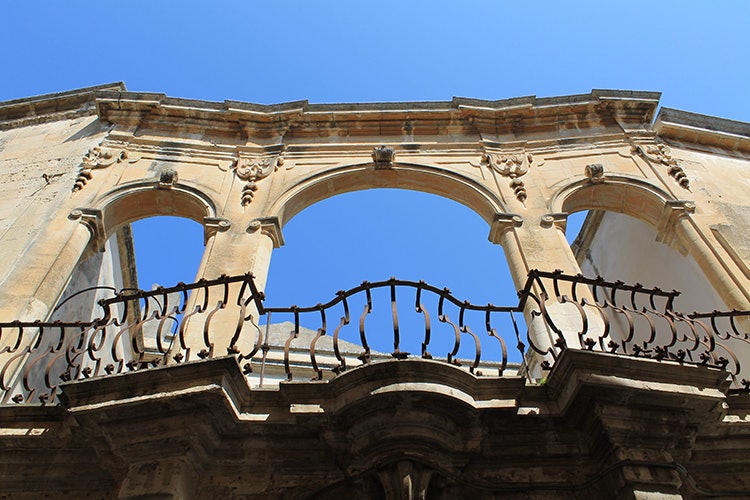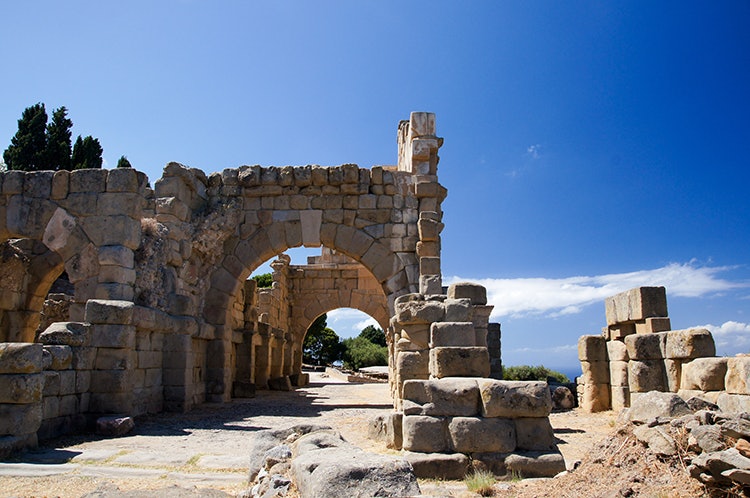

Perhaps you have already seen the art and archaeology in Rome, the lemons on the Amalfi Coast and the winking mosaics of Venice’s San Marco. Maybe you just don’t like crowds, or busy streets or tourist menus; or perhaps you just want to see a different side of Italy, one that’s more intimate and local and, best of all, budget-friendly.
Luckily for you getting off the beaten path in Italy is a breeze. There’s over 7600 km (4720 miles) of coastline to explore, there are dozens of lakes, volcanoes and hilltop villages, and over 40% of the country is covered in mist-shrouded mountains. If you take the road less travelled you’re likely to encounter a warm welcome. Italians are proud of their local town and they’ll be delighted to show you around. So why not try one of these up-and-coming regions?
Veneto

In fair Verona. Image by Toprural / CC BY-SA 2.0
The visual blitz that is Venice often leaves travellers with little energy or inclination for exploring the much-underrated Veneto countryside. Sixteenth-century Venetian nobles knew better and decamped here en masse to elaborate summer palaces to enjoy the region’s sophisticated provincial towns, vine-draped hillsides and Riviera scene. Follow in their footsteps and take a prosecco-fuelled barge tour down the Brenta canal past some of their finest homes, all the way to Padua, where Giotto frescoes and tourist-free Titians beckon. Vicenza, too, is worth a visit for its spruced-up Basilica Palladiana and blockbuster art shows. From there it’s a short train ride to Verona, hometown of Shakespeare’s star-crossed lovers, Romeo and Juliet, that goes one better than Rome by hosting the world’s biggest open-air opera festival in its 1st century AD arena (www.arena.it). Besides the opera, Verona’s hinterland offers a lesson in fine wine with the vineyards of Soave to the east and Valpolicella to the north. Supping grand crus derived from Allegrini’s Corvinia and Rondinella grapes in the aristocratic Villa della Torre (www.villadellatorre.it), you’ll want to keep this secret all to yourself.
Umbria

The Basilica of San Francesco in Assisi. Image by Jim Linwood / CC BY-2.0
Everyone knows about the charm of Tuscany’s Chianti Hills, but Umbria, tucked away from the coast and close to Italy’s geographical heart, has a preternatural beauty. More rural than Tuscany, its fields and plains bloom with a dizzying spray of wildflowers in spring and then transform chameleon-like to a blanket of richly textured umber (hence the name) come fall. It’s ancient, too: a high Etruscan civilisation thrived in Orvieto in pre-Roman times, a city so cinematically beautiful it could be the illicit love child of Rome and Florence. In between, countless medieval villages – Spoleto, Spello, Todi, Montefalco, Montone, Norcia – crown the hilltops, glowing like honey in the sunset, and Lake Trasimeno, Umbria’s largest lake, shimmers with a mystical, silvery gleam. Then there are the region’s artistic attributes: Perugino, Raphael and Rossini were all native, and the basilica of home-grown saint, Francis of Assisi, is crammed with divine works by Giotto, Cimabue, Lorenzetti and Simone Martini. But for those whose religion tends towards the high altar of Italian cuisine, Umbria’s pantry is stocked with black and white truffles, cold-pressed olive oils and Sagrantino wine and provides a fast track to paradise. If this is a poor man’s Tuscany, then maybe it’s better to be broke.
Puglia

Arches in the 'Florence of the South'. Image by Patrick Nouhailler / CC BY-SA 2.0
After Sicily and Sardinia, the Puglian peninsula is considered by some to be the third island of Italy. It is hot, dry and remote, retaining a flavour of its Greek heritage in its white-washed towns and immense olive groves. In summer, the soleone (lion sun) drives shop owners to close their shutters, ripens the olives and puts power in the local wine, which means the best place to go is always the beach. And what a beach it is: miles and miles of white sandy shore fringed with lapis water and crowned at strategic points with fortress castles at Bari, Brindisi, Otranto and Gallipoli. Travel inland and you’ll find the beautiful Baroque city of Lecce, the ‘Florence of the South’, and the fertile karst plateau of the Murgia with its patrician towns – Martina Franca, Locorotondo and Conversano – and feudal masseria (fortified farm estates), many of which now offer unique accommodation.
Sicily

Ruins in Sicily. Image by Scott Wylie / CC BY 2.0
It would be ridiculous to claim that Sicily is undiscovered when travellers have been beating a path up Mt Etna’s smoking cone since the 18th century. But, despite its famous tourists (Goethe, Byron, Madonna et al), Sicily remains resolutely Sicilian, and while you’re there you’re unlikely to hear a single British or American accent.
Nearly 25 centuries of foreign domination have left a legacy of splendid civilisations, crystallised and concentrated, from the coolly classic Hellenistic architecture of Syracuse and Catania to the startling fusion of Byzantine artistry and Norman austerity in the cathedrals of Palermo, Cefalu and Monreale. This cultural complexity is matched only by the island’s incredible diversity of landscape: rolling hills and valleys swathed in vines, orange, pistachio and cherry trees, the brooding cone of Etna with its steep volcanic escarpments and a necklace of encircling islands: the Egadi, Aeolian and Pelagic. Barely a third of the size of Ireland, Sicily manages to retain the illusion of a small continent in a large sea.
Sardinia

The cityscape in Cagliari. Image by Jorge in Brazil / CC BY 2.0
Sardinia is the maverick of the Mediterranean. It’s Italy’s second largest island after Sicily, but it barely feels Italian at all. Writer DH Lawrence felt it had slipped through the net of European civilisation, retaining its own character and passions. Geologically speaking, Sardinia is older than mainland Italy, with its granite and basalt mountains predating the Apennines and the Alps. And its identity is deeply rooted in a prehistoric people who constructed the island’s 7000 mysterious nuraghi (stone towers), domus de janas (literally ‘fairy houses’) and sacred wells. It looks and feels much like a shoot location for Lord of The Rings with a Celtic landscape of ragged hills that divides and protects a highly individual mosaic of towns from sultry Cagliari in the south to Spanish-influenced Alghero in the north and resolutely rural Barbagia in the east. This distinctive regionalisation has helped to preserve many unique aspects of the island’s culture particularly in its food and folklore festivals, which are some of Italy’s most intriguing spectacles. Travelling here is one of the last great surprises of the Mediterranean.
















